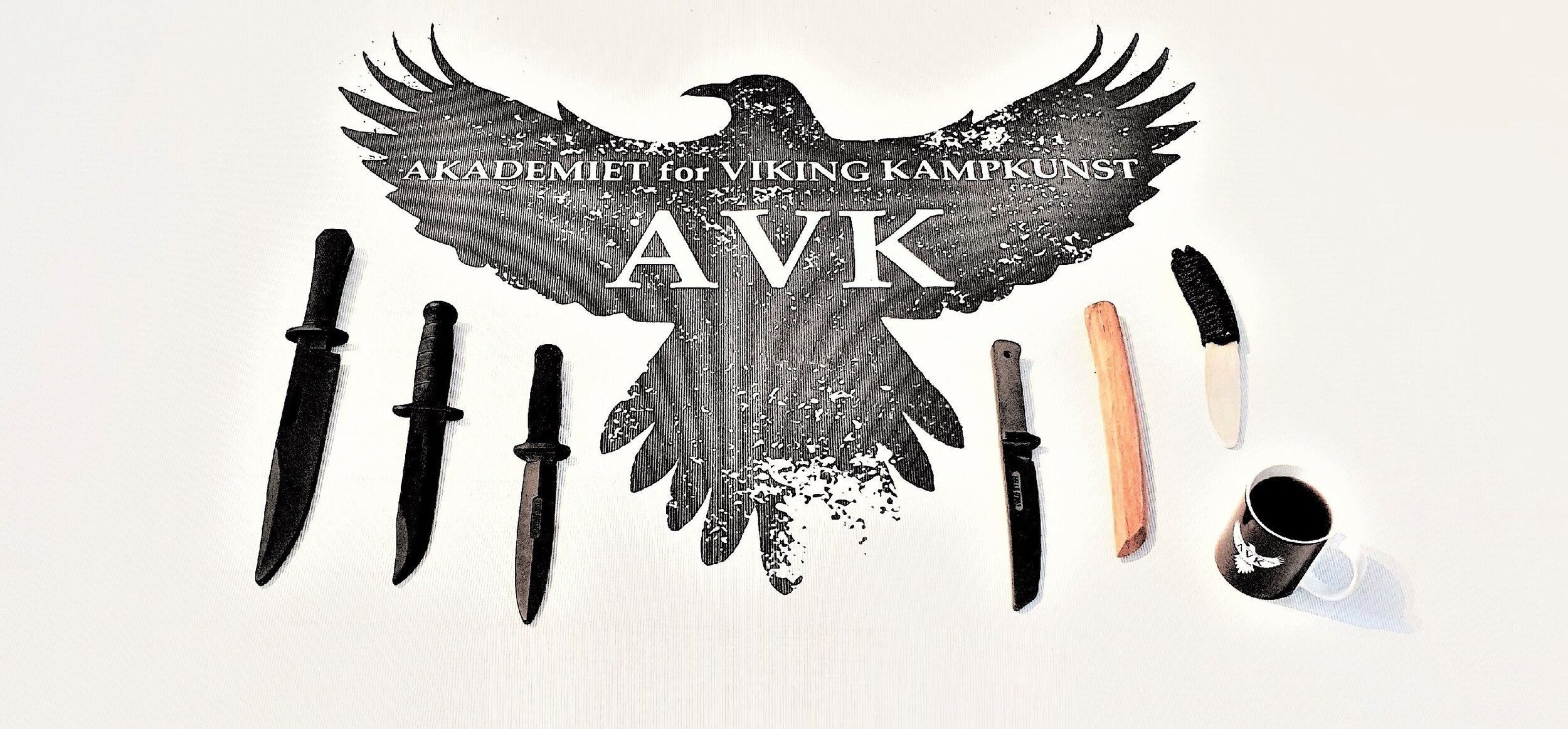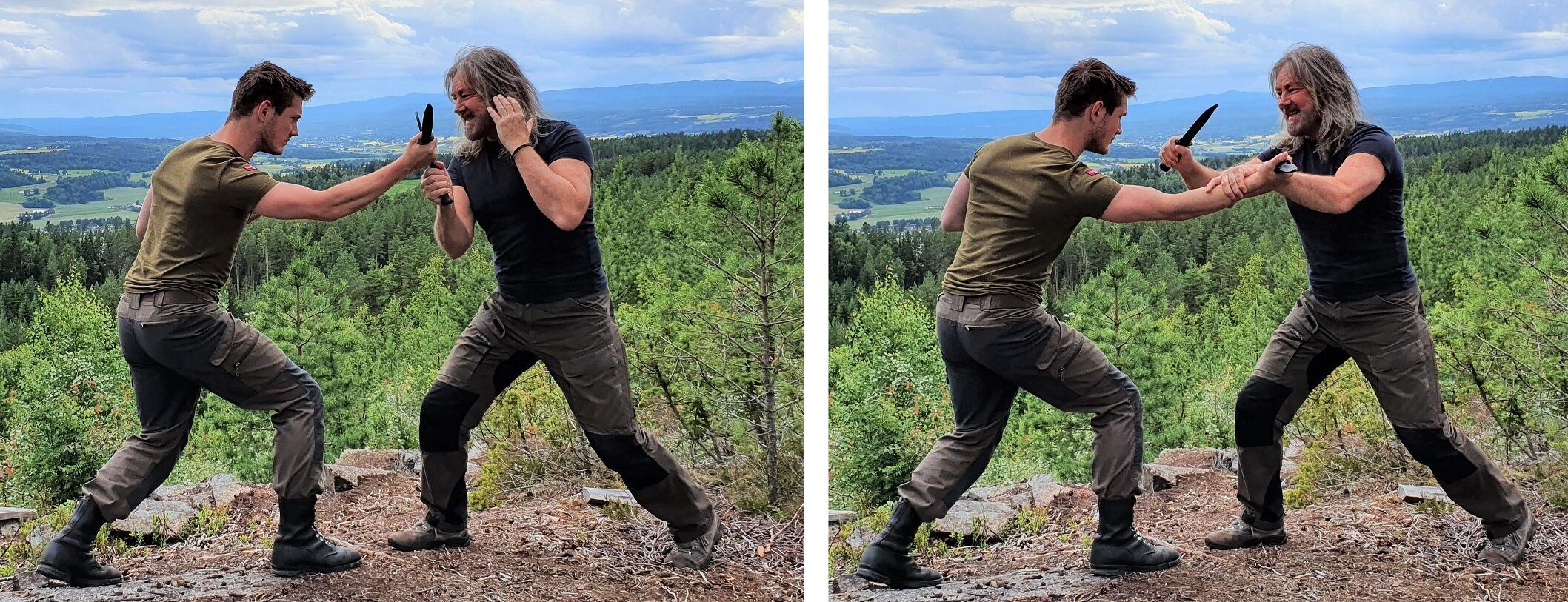KNIFE TRAINING by Tyr Neilsen
/It’s nice to have a good knife. It’s even nicer to be able to use a knife, or have the skill to defend against a knife attack. Lots of practice is needed in order to be good at a technique, and practice is what it takes to develop speed and accuracy with a knife. To this end, training knives are a vital part of a martial artists equipment.
Rubber, wooden and aluminum training knives are the foremost types of training knives used to safely practice weapon techniques and self-defense against knife attacks. Although a solid hit, thrust or slash with any one of these types of training knife can be painful, they are relatively safe, and allow martial artists to try techniques without getting hurt.
Training knives are shaped in a variety of styles and sizes, but the main types of training knives are based on the Bowie knife, Ka-Bar knife, Tanto knife, dagger and folding knife. (The first five Academy articles about modern weapons cover these specific types of knives). The Bowie, Ka-Bar and Tanto training knives are good training substitutes for different types of Viking seaxes, and the smaller training knives are good substitutes for the basic small Viking knife.
(FROM LEFT TO RIGHT) COLD STEEL RUBBER TRAINING LAREDO BOWIE, LEATHERNECK - SF, PEACE KEEPER I, RECON TANTO, HARDWOOD TANTO, ALUMINUM TRAINING KNIFE.
Although most training knives can be used to develop knife skills, it is smart to think about what type of training knife fits your needs. There are subtle differences in the size and weight of rubber, wood, polymer and aluminum training knives, and even though the tip and blade edges of training knives are blunt, there are differences between training knife cutting edges. These factors are worth taking into account when purchasing and training with a training knife.
Practicing unarmed self-defense techniques against a knife, means the training partner who is doing the ‘attacking’, becomes steadily more skilled with a knife. Technique training using a training knife means that you are relatively safe as you develop coordination, balance, muscle memory and footwork. Hand-eye coordination speeds up. Reaction time is shortened. Consciousness of the situation and how you move within it is heightened. Focus is sharpened and your capabilities and confidence are enhanced.
Getting out of the way of the attacker’s weapon is a constant priority, and footwork and moving in balance are probably the skills that benefit most from working with training knives. As soon as you find your training partner has a knife in their hand (even though it is made of rubber or plastic) a sense of real danger pervades the training. At a deep level you know that if you perform a technique badly you will be cut, and if this happens when defending against a sharp steel blade, the consequences could be serious.
Practicing regularly with a training knife keeps students aware of the chaos that is a weapon attack, whilst keeping them relatively safe. Training in such chaos situations keeps the student aware, tunes the reflexes and body coordination, and solidifies the stance and footwork.
Training in a ‘closed’ area forces students to be aware of the other people training. In this situation students become increasingly aware of other students and ‘weapons’ around them. This spacial awareness helps students make sure they don’t stumble over other students or get hit by them. Safe training like this helps students keep focus on their goals amid the chaos of an attack with a weapon.
ALWAYS TRAIN SAFE
It is advised that the intensity of knife technique training increases only in accordance with your capabilities. Understanding why you move in a certain way leads to perfecting technique. No one ever really knows if they are prepared for a situation until that situation happens, but the only way to being prepared for such a situation is by practicing in relative safety. There is nothing to gain by training so hard or unsafe with a partner that one or both are maimed or seriously injured.
Practicing with training knives of different types and sizes provides more options and enhances the ability to fluidly go from one type of knife to another. It is always helpful to remind yourself and your training opponent how it feels to be hit or cut , by using the training knife to lighty 'stick', stab’ or 'cut' the body, without doing any damage.
It is of the utmost importance to train safely and avoid injury, allowing you to continue perfecting techniques. Being able to return without injury and with greater eagerness is incredibly important.
ALUMINUM TRAINING KNIFE CAN BE USED FOR PRACTICING WITH SIMILIAR SIZED KNIVES, SUCH AS THE FOLDING KNIFE.
WARNING:
It is of the utmost importance to understand and remember that working safely with training knives is very different than using or defending against a real knife with a sharp edge. Although working with a training knife helps understanding and performance of defense techniques, facing a live blade will create a different mindset. No matter how clever you are with a training knife, fear, sweaty hands and stiffness of movement can suddenly take over in a real situation.
Not all maneuvers and disarms that have been practiced to perfection in a totally safe environment, with blunt weapons and protective padding, are effective when faced with an attacker who is intent on harming you. No longer is the person you are facing ‘letting’ you defend and disarm, but is forcefully changing the dynamics of the encounter by resisting any trapping or disarm techniques.
After becoming proficient in the use of training knives, some martial artists use sharp steel knives for advanced technique training to prepare for encounters with armed attackers. This is absolutely not recommended for beginners, and should only be done by consenting experienced training partners.
RUBBER COLD STEEL LEATHERNECK-SF TRAINING KNIFE AND POLYPROPYLENE TRAINING KNIFE (LEFT) BASED ON real USMC KA-BAR KNIFE STYLE AND LEATHERNECK-SF (RIGHT)










